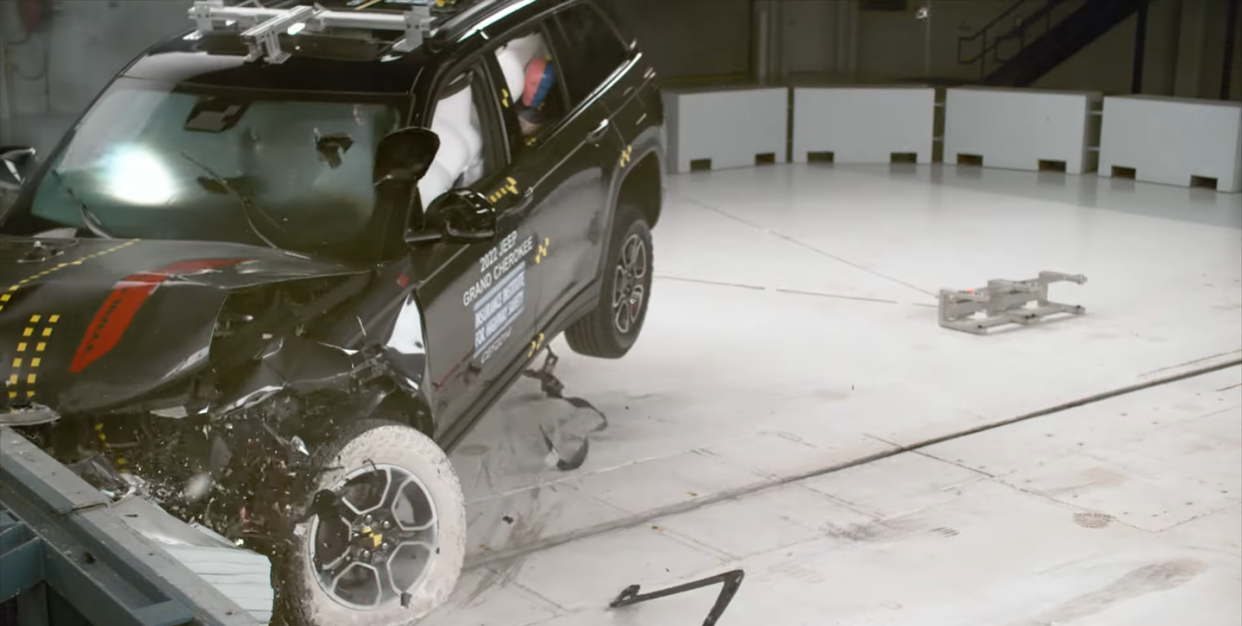Most Midsize SUV Rear Seats Aren’t Safe Enough In Crashes, IIHS Says

The Insurance Institute for Highway Safety isn't all too impressed with the results of its new test of midsize SUVs. In the moderate overlap front impact crash test, just four of the tested SUVs earned "good" ratings in rear occupant protection. This is not what you want in a family rig.
The test involves a vehicle striking a deformable barrier with 40 percent of its width at 40 mph. It simulates two vehicles striking each other from oncoming lanes, or hitting a large barrier with substantial portion of the car. The vast majority of vehicles on sale protect the driver well enough in this test to earn a "good" rating, so the IIHS has introduced a rear-occupant safety component. A second dummy representing the size of a small woman or 12-year-old child is placed in the seat behind the driver, and the test results are based on the probability of injury of that dummy.
Only the Ford Explorer, Ford Mustang Mach-E, Subaru Ascent, and Tesla Model Y earn "good" ratings in this new test. The Chevy Traverse, Toyota Highlander, and Volkswagen Atlas earn the next-best rating, "marginal." The Honda Pilot, Hyundai Palisade, Jeep Grand Cherokee, Jeep Wrangler 4-Door, Mazda CX-9, and Nissan Murano all earned "poor" ratings. It's worth noting that the Pilot tested was a 2022 model, and the model has since been redesigned. The IIHS has not released crash test results for the '23 model.
The IIHS reports that the risk of fatal injury for belted rear-seat occupants is now 46 percent higher than for belted passengers in the front. This gap exists in vehicles from model year 2007 onward, as front seat safety has rapidly progressed—with new forms of airbags, updated restraints, and better crash design—while rear-seat safety has been comparatively stagnant. The good news is that when a group of automakers get creamed in an IIHS test, they tend to address these problems for the next generation of vehicle. Everyone wants to be a top safety pick, and thanks to the new test, that'll now require real protection for both front and rear passengers.
You Might Also Like
